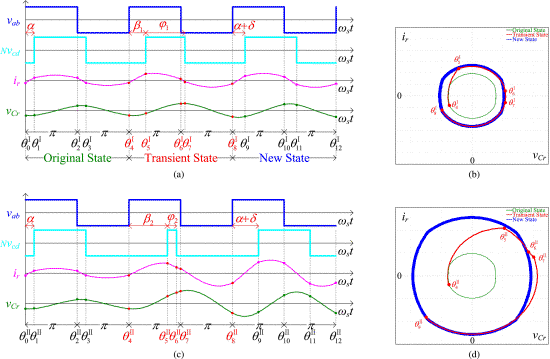Total Suppression of High-Frequency Transient Oscillations in Dual-Active-Bridge Series-Resonant Converter by Trajectory-Switching Modulation
Dec 24, 2021· ,,,·
1 min read
,,,·
1 min read
孫川
Xingyue Jiang
Lingling Cao
Ka-Hong Loo
 Image credit:
Image credit:Abstract
Dual-active-bridge series-resonant converter (DABSRC) is increasingly used in many emerging power electronics applications requiring fast dynamic responses. However, under conventional transient phase-shift modulation strategy, DABSRC generally suffers from large-amplitude transient oscillations when its phase-shift angle is changed abruptly by a high-gain controller. These oscillations occur at the beat frequency, which results from the interaction between the switching-frequency and resonant-frequency components in the series-resonant tank during transient states. Besides incurring high voltage and current stresses on the power-stage devices, these transient oscillations also span many switching cycles between the original and new steady states and cause perturbations to the output voltage of DABSRC, thereby degrading its dynamic performance and output voltage quality. To mitigate these problems, a new transient modulation strategy, known as trajectory-switching modulation (TSM), is proposed for achieving an accurate and computationally efficient trajectory planning of the resonant voltages and currents of DABSRC during transient states, and its basic operation is to govern the transient switching patterns of the gating signals according to a simple set of closed-form equations. The proposed TSM strategy can guarantee convergence to the next new steady state within about one switching cycle and avoid needing costly sensors and complex computation for implementation, and it is inherently compatible with high-gain controllers for realizing oscillation-free fast dynamic responses.
Type
Publication
IEEE Transactions on Power Electronics, 37(6)
Click on the PDF button above to view the full text.
Click the Cite button above to import publication metadata into the reference management software.